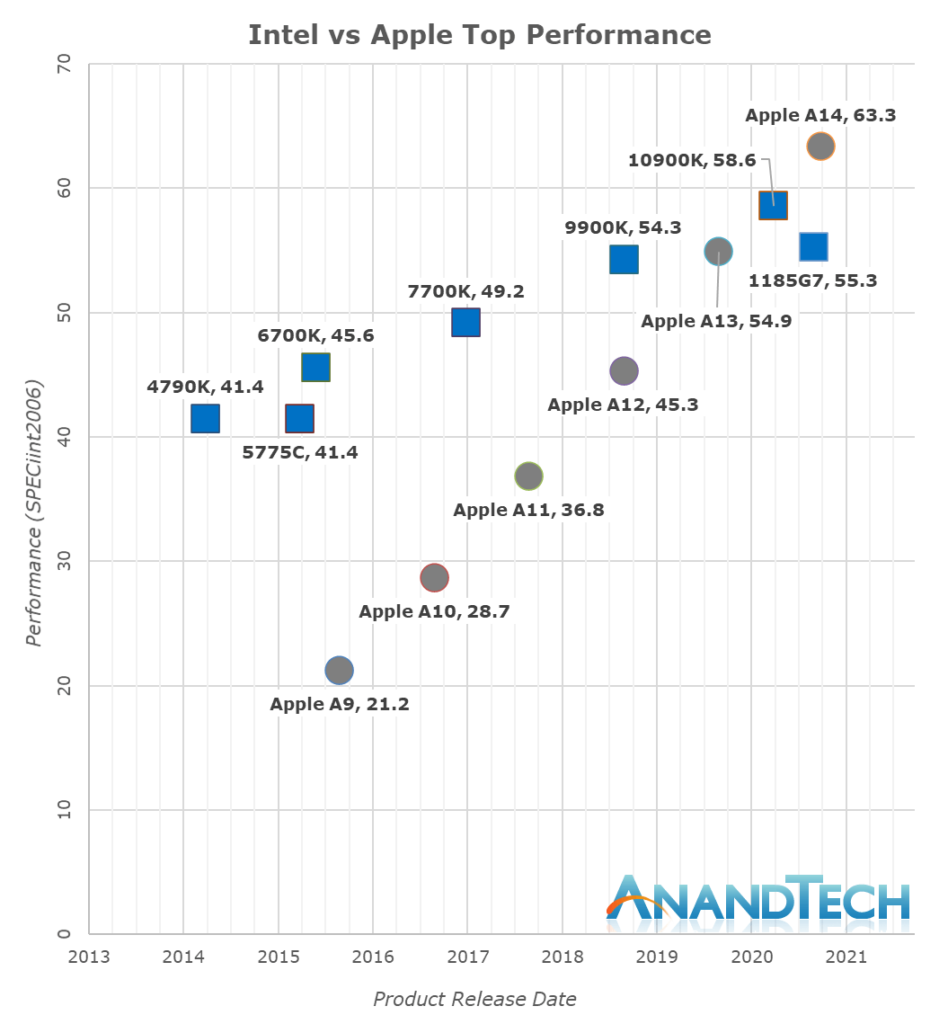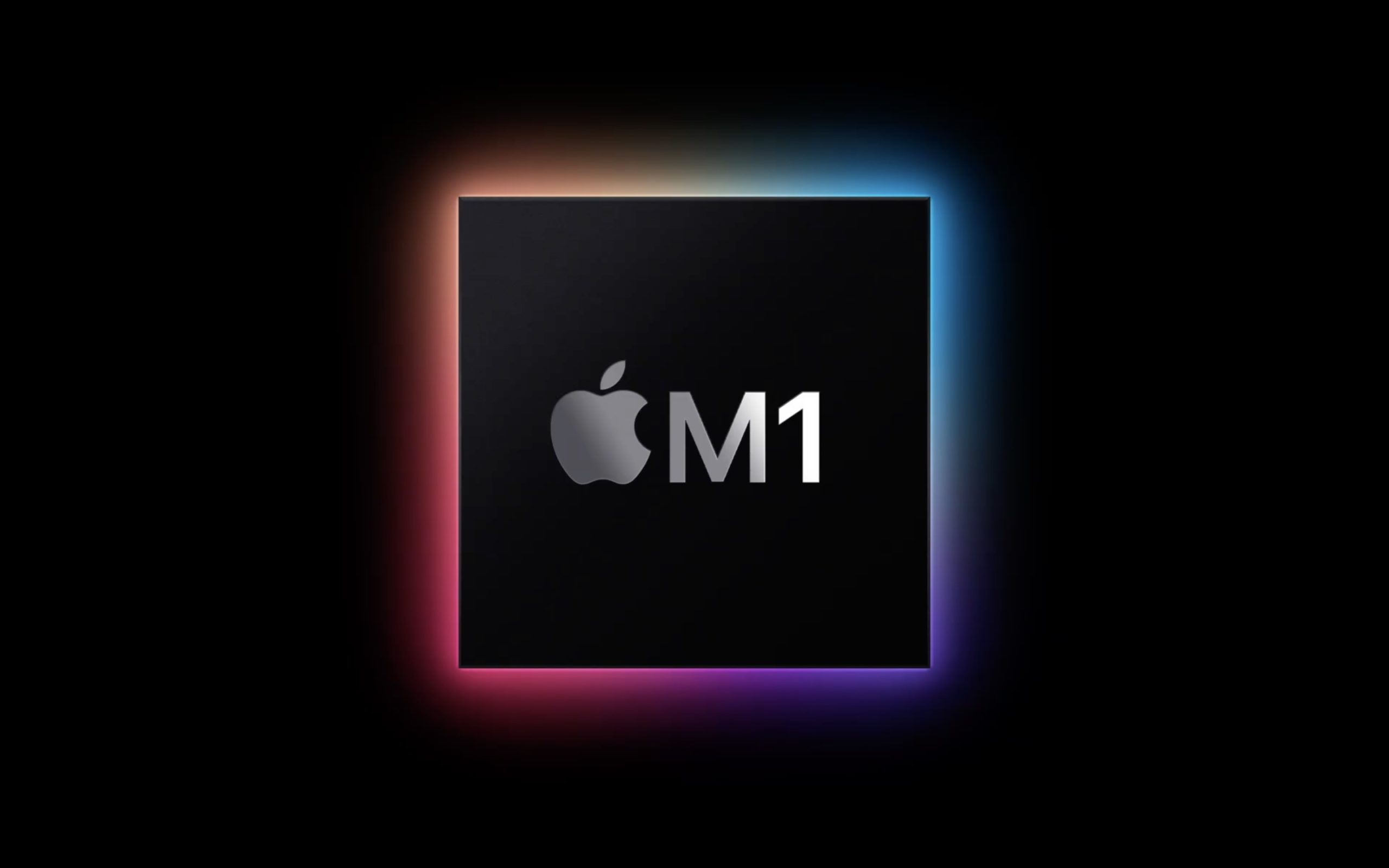One of the biggest advantages of Mac computers has always been the fact that the hardware (Mac) and the operating system (macOS) are designed, developed and manufactured by one company. However, throughout the 38 years of Macintoshes, there has been one component that became an exception to this - the most important part of the computer, the 'brain' or processor (CPU). This changed two years ago, when Apple launched a Mac powered by the first Apple Silicon processor. Let's see why Apple Silicon is the technology of the future, available to us now, without compromise.
Intel is history
In 2005, Apple decided to switch from PowerPC processors to Intel processors. Although I think it was a perfectly logical and necessary decision at the time, the consequence was to tie Mac to the world of Intel for 15 years.
In 2020, the Mac broke free from this shackle when the first Mac was released with a fully proprietary processor - Apple Silicon. The first generation of Apple's 'M' series of Silicon Macs, the M1, shook the IT world.
As one professional put it, "For 15 years Apple has sold very high quality, overpriced PCs, but now the Macintosh is again what Steve Jobs dreamed it would be". Even if this statement is a bit exaggerated, it illustrates the radical change that the arrival of Apple's Mac with Silicon processors represents.
Why? What's wrong with Intel processors?
Intel itself is suffering under the 45-year-old burden of a fossilized x86 architecture, which Microsoft and Intel itself locked itself into. They tried to break away from this and failed on several occasions (for example with the Itanium architecture). The only real change - switching to a 64-bit architecture - was not even made by Intel, but by the competitor AMD, which was a huge innovation of course, but it further entrenched the status quo. While new ideas, new solutions and thousands of new technologies are being developed every year in every field of information technology, PCs are still operating on processors that are - to put it mildly - half a century old.

Apple, on the other hand, could design a new desktop processor for the world from almost nothing, since they don’t have to adapt to any external source. That's because since the iPhone 4, all iPhones and iPads have been powered by the Apple-designed 'A' series processor. Obviously, the 'M' series for the new Macs, of which the M1 is the pioneer, is based on 12 years of design and development of the 'A' series. Now there was no need to compromise, as the operating system and processor development are in the same hands.
A meticulously planned future
But how is Apple Silicon different?
One of the key differences is the so-called big.LITTLE architecture , which allows several high-performance and several low-power processor cores to be used simultaneously in a single processor. To simplify, let's call the former the P core (Performance) and the latter the E core (Efficiency). This technology has been used in mobile phones for a few years now to save power by having the high-power P core perform only compute-intensive tasks and the battery-saving E core do everything else.

Source: Apple
Of course, the desire to stop climate change has already made it important for workstations to consume less, but the continuous increase in power has shifted to focus from this back then. Now, however, the energy crisis has made consumption a burning issue, not only for mobile phones but also for the desktop market. Apple Silicon has made a big difference here too, reducing consumption very significantly. We will calculate how much in detail in a forthcoming article.
SPOILER ALERT!
By miles! The power consumption of an Apple Silicon Mac is a third of a PC workstation’s.
Work Focus - with processor support
Now I want to highlight another huge advantage of the big.LITTLE architecture under macOS. While working on your computer, developing, reading, writing emails, etc., there is nothing more annoying than when the system slows down or even stops for seconds, doing "nothing", or even not responding to a keystroke. Of course, there are several reasons why this could happen, one of the most common being that the computer is "doing" something in the background. For example, the virus scanner may be checking the contents of a large letter, the operating system may be checking for updates or installing them or backing up the data from the computer. These are called background processes and they obviously shouldn’t prevent the user from working. Of course, software engineers do their best to prevent this from happening, but it’s not an easy task without proper hardware support. However, with Apple's Silicon-equipped processor, under macOS, these background processes run on the E cores (they can't run on anything else), and the P cores are on full alert to enact the user’s will and to accelerate to five to six times their base performance within seconds. The result is a responsive, instantaneous system and far fewer "waiting for the computer" messages.
And Intel? Nearly 10 years ago, at the same time as the launch of Intel-based mobile phones, an Intel executive, who wished to remain anonymous, said "only those who can't design well design small and big cores". Then – 2 years after Apple unveiled the first Mac with the M1 processor – Intel released the Alder Lake processor with the big.LITTLE architecture. It was so complex that it didn't do the numbers, it didn't run many applications, thus it divided the industry. In addition, in order to fully exploit the big.LITTLE architecture, a lot of development still needs to be done in Windows and Linux operating systems, while macOS supports this architecture already very well.
Where size matters
The other very important feature of the 'M' series is the 5 nanometers (nm) wafer width. The smaller this number is, the more transistors a processor can contain. The smaller this number is, the less power a processor consumes and the less waste heat it emits (heat loss). At the time of M1's release in 2020, it was 5 nm, while AMD and Intel were at 7 and 10 nm, respectively. This is a huge advantage from a technological point of view, but it’s also a huge leap for the user, as Apple has been able to increase performance while reducing power consumption.

Source: Apple
But there is another important component of this size. The cores of the M1 processor are so small that the processor case can easily fit into a graphics processor, memory and other specific processors for all sorts of purposes. These so-called target processors can perform many operations much faster, for example encryption or image processing can be significantly faster, without slowing down the main processor. In addition, by combining memory and these target processors with the central processor, the distance between the individual elements has been reduced, allowing them to communicate with each other much faster.
Security and compatibility
One of the biggest changes from an enterprise and also from an SME perspective is the SEP (Secure Enclave Processor), the embedding of a separate chip for confidentiality/security with the processor. This has been done with Intel Macs, but due to the constraints, many of the features are only now available with Apple Silicon. Examples include hardware-controlled secure boot, memory protection and automatic real-time file system encryption. These significantly improve data security and make data leakage – for example, in case of a theft – impossible. With the launch of the 'M' series, security and confidentiality have reached a new level. Security analysts say the SEP hardware design is light years ahead of its competitors.
And what about compatibility? If the processor architecture has been completely changed, how can I run the old Intel software under M1 and M2?
Easy. The same way.
Apple did the same thing once before when they switched from PowerPC processors to Intel. Back then Rosetta, now called Rosetta 2 is a software layer that ensures the smooth running of Intel software under Apple Silicon without the user noticing anything. Moreover, not only do they run at the same speed, but there are also applications written for Intel that run faster under Rosetta 2 on a computer with an M1 processor than on an Intel processor!
The revolution of the workstation
But if Apple Silicon is so good, why doesn't it spread like wildfire?
It does. In 2020, with the release of the M1 processor, macOS’ market share of the desktop market in the US grew by 5%. And based on this year's annual sales figures , Mac sales are up by 40.2% worldwide, while Lenovo sales are down by 16% and Dell down by 21.2%! The industry already knows that a revolution has taken place.
Apple Silicon's performance, power consumption, reliability and, not least, its greatly enhanced security have made Macs the ideal workstation.
In addition, MacBooks built with the M2 processor, the second step on the road to the future launched this year... but we'll cover that in more detail in another article.
SPOILER ALERT!
Linus Torvalds, the father of Linux, released Linux version 5.19 from his M2 MacBook Air.
So Apple Silicon is nothing but on-the-edge technology without compromise. The result is the most stable, reliable and, above all, secure hardware (Mac) and operating system (macOS). And the performance-to-power ratio is unbeatable.
To infinity and beyond
And that's just the beginning of the journey. Developer companies are constantly moving to Apple Silicon, optimizing new applications for this platform. Optimized applications run even faster and consume even less power. As Apple's dependency on Intel is finally over, all code related to Intel processors will be removed, resulting in an even lighter, even faster operating system where the introduction of innovations will no longer depend on external companies. Apple Silicon is the future of workstations.
If someone wants to equip their company with the most advanced technology while keeping costs down – or even consider climate protection – they'll buy MacBook Air, Pro or MacMini. Combined with well-planned enterprise asset management, they'll give any IT manager a good night's sleep.


